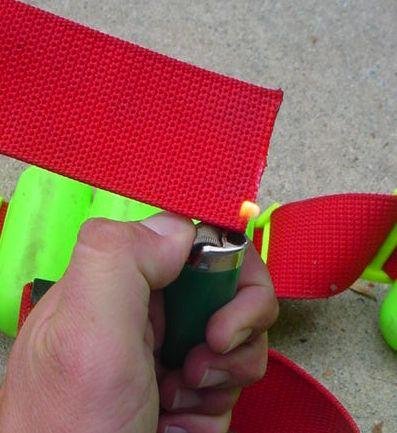Weight Systems
Scuba diving is often considered to be the closest experience to being in space. While underwater you'll feel like you're weightless, and this provides you with the opportunity to glide high over the ocean floor, scale the side of a tall vertical wall, and fly over underwater formations.
To make this possible, you'll wear gear that allows you to adjust your buoyancy while underwater and at the surface. This gear includes a weight system and buoyancy compensator. Together, these items allow you to achieve neutral buoyancy, which means you hover in the water without floating or sinking.

Why Divers Wear Weights
Your exposure suit and body are buoyant. This means that to descend and remain underwater, you'll need to wear lead weights to offset this buoyancy.
The exact amount of weight you'll need to wear depends on your body type, type and thickness of your exposure suit, and whether you're diving in salt or fresh water. If you wear too little weight, you'll float to the surface during your dive. If you wear too much, you'll have difficulty staying off the ocean floor.
Your instructor will work with you to determine the proper amount of weight for you to wear. When properly weighted, you should float at or near eye level with a normal breath of air in your lungs and an empty BC (covered during the next topic). You should then slowly sink when you exhale that breath.
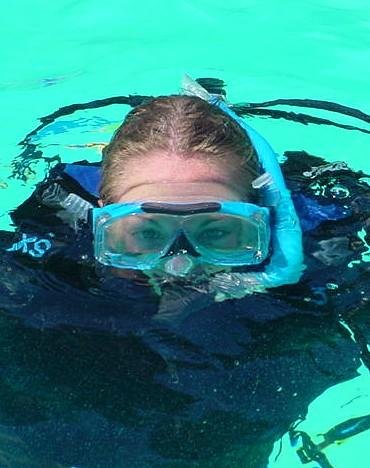
Hard Weights
Weights are available in both hard and soft styles. Hard weights come in two basic shapes: block weights and bullet weights.
Block weights are flat in shape and have two slits for weaving the belt through the weight. These weights are available in sizes ranging from one to over ten pounds.
Bullet weights are cylindrical in shape, and have one slit. These weights are available in sizes ranging from one pound to five pounds.
Most hard weights sold today are coated with rubber. This prevents your skin from contacting the lead, which is a known carcinogen. Another benefit is that it prevents the weights from scratching surfaces such as pool bottoms.
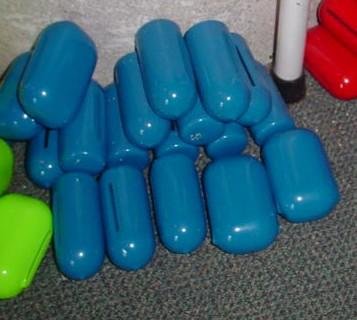
Belts For Hard Dive Weights
There are two basic styles of belts available for hard weights. The most common is a 2-inch nylon belt. Nylon is used because it's strong and does not deteriorate in water.
Nylon does not stretch, so if you're wearing a wetsuit, the belt may become loose as you descend and the wetsuit compresses. To prevent the belt from slipping off or rotating, be sure to tighten the belt as you descend.
Rubber belts are also available. These are called "compensating" belts because the rubber contracts as the wetsuit compresses. This maintains a proper fit during the dive, and eliminates the need to tighten the belt as you descend.
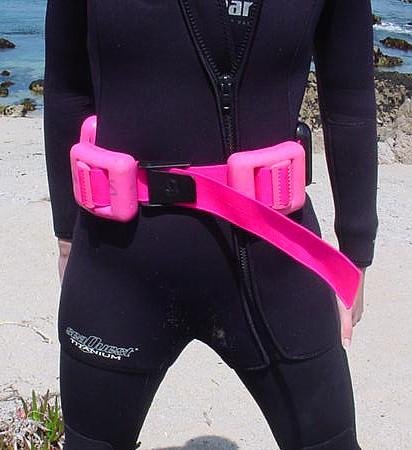
Assembling Your Weight Belt
Hard weights are designed for use with a 2-inch belt. The belt is woven through the weight, and weight keepers secure their position. The figure to the left illustrates the weight keeper configuration for both block and bullet weights. As you can see, with bullet weights the keepers are placed at each end of a row of weights, while with block weights, the keeper is placed between the two slits.
The weights should be positioned on the belt so that when worn, the weights are positioned over the hips. Also, make sure an equal amount of weight is placed on each side of the belt. This helps prevent your body from rolling to one side while diving.
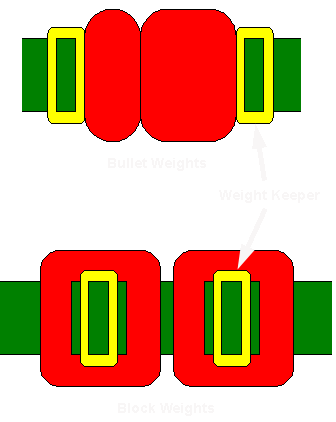
Soft Weights
Soft weights are similar to bean bags, and are filled with tiny beads of lead. Common sizes range from one pound to five pounds. These weights are used with a special weight belt that contains pouches to hold the weights.
Soft weights are popular because they form to the shape of your hips, and this increases comfort. Additionally, since the belt's pouches are usually secured with a zipper, changing the amount of weight in your belt requires less effort than with hard weight belts.
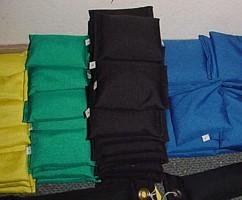

Quick Release
It's important that you or your buddy are able to quickly remove your weight belt in the event of an emergency. For this reason, it's essential that your belt fastens with a quick release buckle.
The most common style is pictured to the left. To secure the weight belt, you pull the lever out, slide the end of the belt through the buckle, and then push the lever in.
In the event of an emergency, pulling the lever out releases the belt. Your instructor will teach you the best method for "ditching" your weight belt, and you'll have plenty of opportunity to practice this skill.
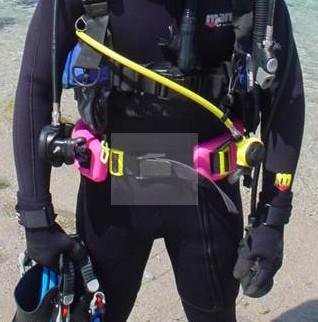
Accessory Weights
Belts aren't the only devices for holding weights. Weights can also be placed on your ankles, tank, or BC. (Weight integrated BCs are covered later in this lesson).
Ankle weights are popular accessories for those divers who have difficulty maintaining a horizontal position while in the water. They do, however, increase the effort required to kick, so no more than a couple pounds should be worn on each ankle.
During the "Scuba Cylinders" lesson, you'll learn that some cylinders become buoyant as you consume air. You can compensate for this by attaching tank weights to your cylinder. Most tank weights are 4 to 5 pounds.
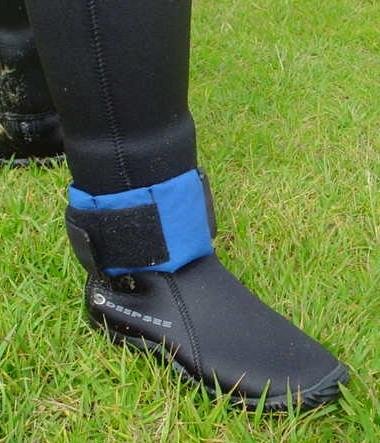
Weight Belt Maintenance
Weight systems should be inspected before every dive to ensure dependable operation.
Inspect your weight belt for fraying. It's common for belts to fray at the end, and cutting the frayed portion from the belt easily repairs this. To prevent further fraying, singe the new cut with a match or lighter until the nylon strands melt together.
Most buckles and weight keepers are made of plastic, so check these for signs of cracks. A cracked buckle could break during a dive and result in a rapid ascent to the surface.
